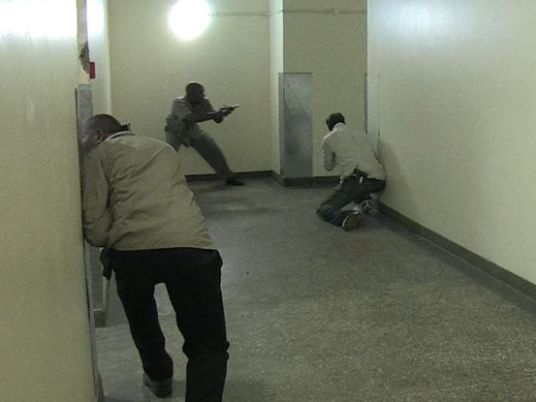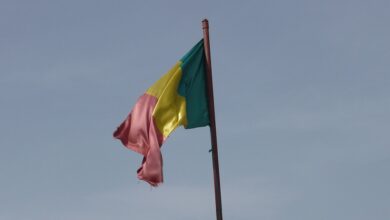
For the first time in history, the public was able to discover the details of a terrorist attack as it happened. This remarkable development took place last week when the Somali Al-Shabaab terrorist group attacked the Westgate Mall in the Kenyan capital, Nairobi.
The public was relieved by the Tweets of the Kenyan interior minister on Monday evening, declaring that Kenyan security forces took control of the situation after four days of confrontation with terrorists, and dozens of deaths.
The next day, the world woke up to a vague tweet from Al-Shabaab, claiming that the operation was much bigger than Kenyans thought, and that many hostages died at the hands of the security forces. This was not confirmed by any other source.
Other terrorist groups have been using the Internet for many years to recruit members and spread their ideas and activities.
Al-Shabaab appeared on Twitter for the first time in 2011 with its HSMPress account. The group posted clips of those killed in suicide attacks carried out by the group.
The account attracted thousands of followers, but was closed down by the Twitter administration after several months for violating policy. This happened several times, yet the group kept opening new accounts.
American journalist Will Romeos of Slate magazine said that he received an email from the group on 10 September, asking him to follow the account in order to know what the mujahideen do in Somalia and the rest of the world.
But the account really became famous when it announced the Westgate Mall attack. Experts said the information that was tweeted was authentic, which prompted the administration to close it down. But again, the group opened another one. And each time it did so, the new account attracted thousands of followers within a matter of hours.
Gabriel Weimann, author of "Terrorism in Cyberspace: The New Generation," told Christian Science Monitor that terrorists may not have invented anything linked to the Internet, but they learned very quickly how to use it.
Weimann has been monitoring terrorists use of the Internet for more than 15 years. In 1998, he and his team were monitoring 12 sites that – he said – were fairly primitive. Today, they monitor more than 9,600 sites, including chat rooms, online forums, Twitter accounts, Facebook pages, and Google Earth.
“If you were a terrorist, how would you benefit from satellite pictures at your service?” he says.
He says terrorist groups choose their audience, potentially immigrant communities in Western countries, women, or even children, for who to recruit.
The Taliban also have an account called alemarahweb, and the Al-Nasra front, the jihadi group active in the Syrian conflict, has an account called JbhatALnusraa on Twitter. It tweets in Arabic and English, in an apparent attempt to reach out to potential volunteers. So does the Moroccan arm of Al-Qaeda as well as other smaller groups.
Terrorists also use Facebook and create formal and informal pages on it, but the Facebook administration closes them down immediately.
Though terrorist groups use social networking sites, researcher Aaron Ziln of the Washington Institute says most of them still prefer the way adopted by Al-Qaeda, namely forums that require a password to share.
The use of modern social networking sites by terrorist groups created problems for these sites, which were originally created in the interests of freedom of expression and communication. For example, the Twitter administration did not close down the Al-Shabaab account until January 2012, when it posted a gruesome picture of a French soldier that was killed in an attempt to rescue hostages in Somalia. These images violate the site's policies of use.
But the group had another account under a new name in less than a month.
And the Twitter administration did not close the Taliban account because it is not included in the list of international terrorist groups.
Although the radical ideas posted on these accounts may cause annoyance, they give an opportunity for researchers and governments to monitor the activities of terrorist groups. For example, Wyman keeps an archive of all tweets, video clips and messages posted by terrorist groups, while the American researcher Abdel Razek Behe, an activist in the fight against terrorism, checks Facebook and chat rooms on a daily basis to monitor recruitment attempts by the Al-Shabaab group.
CNN said the British intelligence services MI5, GCHQ and MI6 also monitor social networking sites.
However, Professor Peter Neumann of King’s College London says monitoring the many people engaging in dialogues with extremists over the Internet requires enormous resources that no intelligence agency is capable of. “It is difficult to know the nonsense from the true stuff,” he says.
Jean-Paul Roullier of the Geneva Institute for Research and Analysis of Terrorism says that social networking is a vital tool for terrorist organizations to recruit volunteers, and that terrorists can meet in secret chat rooms.
Preliminary reports suggest one or two individuals involved in the Nairobi attack were U.S. citizens. If so, then it was the Internet that transferred Al-Shabaab across the globe from Somalia to the United States, confirming once again that social networking is a new weapon in the arsenal of global terrorism.
Edited translation from Al-Masry Al-Youm




